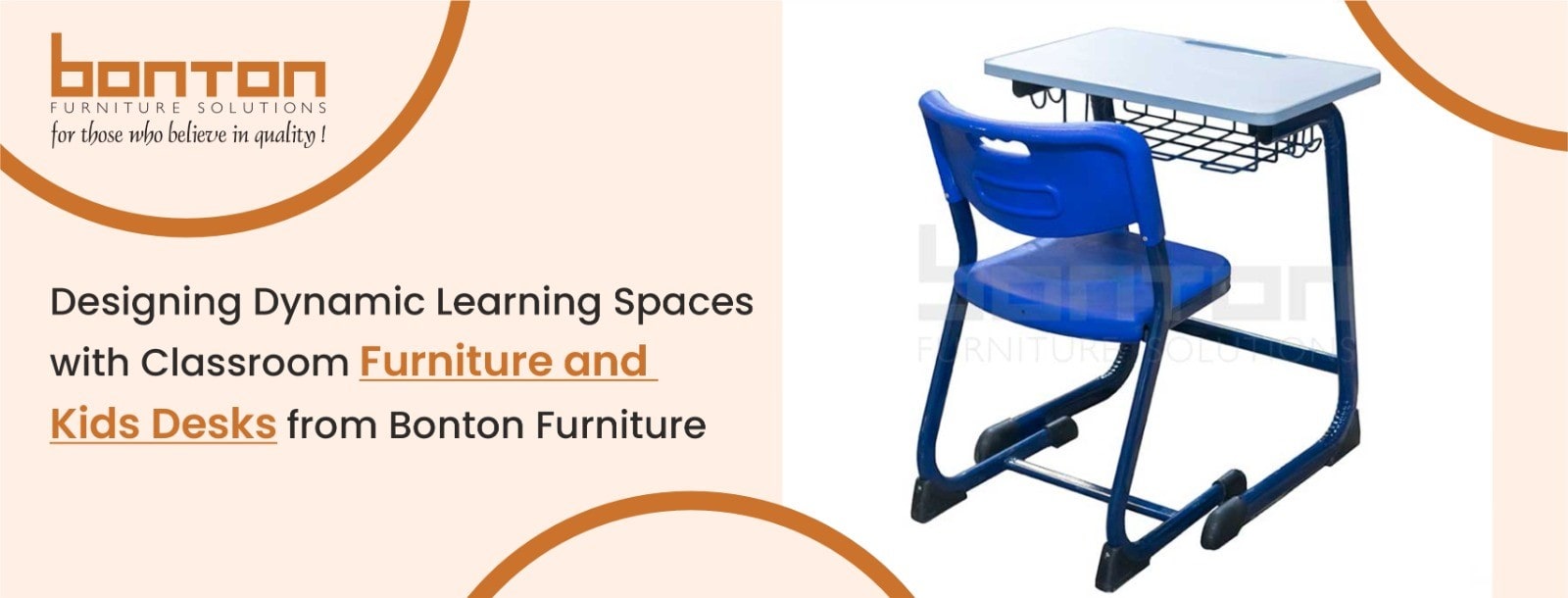
Designing Dynamic Learning Spaces with Classroom Furniture and Kids Desks from Bonton Furniture
Envision a space for young minds that transcends mere colorfulness. It’s a springboard for physical development. The key is integrating preschool furniture that enhances their skills. This furniture goes beyond creating an attractive classroom; it is vital for promoting balance, coordination, and refined motor abilities in our children.
Let’s delve into how these vibrant pieces contribute positively to creating a dynamic learning environment for children.
Choosing preschool furniture involves selecting items that are appropriately sized for kids, durable, and safe. Additionally, the furniture should encourage play and movement. Pieces that can be reconfigured foster creativity and support learning and cognitive development.
- Seating Options That Encourage Movement and Balance
- Climbing Structures to Enhance Strength and Coordination
- School Classroom Furniture Enhances Social-Emotional Learning
- School Classroom Furniture Supports Academic Learning
- Enhance Visual Learning
- New Classroom Furniture Inspires Students and Teachers
- Now Let’s Exploring Preschool Furniture’s Role in Motor Skills Development
- Why Buying Quality School Furniture (Really) Matters
- Here are additional benefits of high-impact school furniture:
- Final Thoughts
Seating Options That Encourage Movement and Balance
Seating options that promote movement and balance are essential in a dynamic learning environment. These include wobble stools, ball chairs, and balance discs, which allow children to move and fidget while seated. Such movement helps in developing core muscles and improving posture. Additionally, it enhances focus and attention, as children can channel their energy productively. By integrating these seating options, classrooms can cater to the natural need for movement in young learners, making learning more engaging and effective.
Climbing Structures to Enhance Strength and Coordination
Climbing structures, such as indoor climbing walls, jungle gyms, and soft play equipment, play a crucial role in enhancing children’s physical development. These structures support the development of gross motor skills, strength, and coordination. They use a variety of muscle groups when climbing enhances physical fitness and endurance. It also encourages problem-solving and risk assessment, as children navigate different routes and obstacles. By incorporating climbing structures into the classroom, educators can provide a fun and challenging environment that supports physical growth and cognitive development.
School Classroom Furniture Enhances Social-Emotional Learning
In the past decade, especially since the onset of the COVID-19 pandemic in 2020, educators have placed a stronger emphasis on social-emotional learning (SEL). Since the release of Daniel Goleman’s book “Emotional Intelligence: Why It Can Matter More Than IQ,” the subject’s significance in K–12 education has only increased. Goleman highlighted the role of “kind” environments, including the furniture in those spaces, in promoting optimal brain development and fostering social connections and collaboration. SEL has a major impact on learning by reshaping children’s growing neural circuitry, especially the executive functions.
School Classroom Furniture Supports Academic Learning
School furniture supports academic learning by providing appropriately sized chairs,
Classroom desks, and tables that physically support students. Quality seating can enhance academic performance by improving breathing and blood flow, stimulating students’ brains. When students have choices in seating arrangements, they feel empowered and personally invested in their learning. Educators recognize the impact of furniture on learning styles—visual, auditory, kinesthetic, and reading/writing—highlighting the importance of thoughtful furniture selection in classrooms.
Enhance Visual Learning
Visual learning relies on charts, diagrams, and videos to help students understand and remember concepts. To enhance visual learning:
Equip classrooms with whiteboards, bulletin boards, and interactive screens for displaying charts, graphs, and images that complement lessons. Arrange desks to ensure all students have a clear view of visual materials, enhancing visibility and engagement. Create interactive learning stations with posters, models, and hands-on tools to aid students in exploring and manipulating abstract concepts. Integrate technology such as tablets, computers, and interactive projectors to deliver dynamic and engaging visual content. These strategies promote active learning and support visual learners in comprehending and retaining information effectively.
New Classroom Furniture Inspires Students and Teachers
Finally, regardless of age, we all feel better in thoughtfully designed spaces that show we are valued. According to FIRA International (formerly the Furniture Industry Research Association) in the U.K., choosing quality furniture signals care for its users, in this case, the students. This attention to detail fosters a sense of belonging and encourages students to respect their environment, promoting a positive and engaging learning atmosphere.
Now Let’s Exploring Preschool Furniture’s Role in Motor Skills Development
When creating your preschool layout, have you given any thought to the profound influence that furniture has on the motor abilities of early learners? The furniture in preschool classrooms influences how kids move and engage with their surroundings. It serves a purpose beyond show. It involves encouraging children to move and play in various ways to develop their gross motor skills.
- Letting them climb to develop their balance and coordination.
- Helping them take on more complex physical activities as they grow.
- Promoting active play and encouraging the correct posture from the early stages of growth.
- Creating body awareness with flexible and creative play.
Why Buying Quality School Furniture (Really) Matters
Investing in quality school furniture is crucial for students’ learning and well-being:
- Comfort and Health: Quality furniture supports ergonomic design, enhancing comfort and preventing posture-related issues.
- Durability: It lasts longer, reducing maintenance costs and ensuring reliability in busy school settings.
- Safety: High-quality furniture meets safety standards, providing a secure environment for students.
- Learning Environment: Well-designed furniture promotes a positive atmosphere that encourages creativity and engagement.
- Support for Learning Styles: Adjustable and versatile furniture accommodates diverse learning needs, supporting different styles and preferences.
- School Image: It reflects a commitment to quality education, enhancing the school’s reputation and fostering pride among students and staff.
Here are additional benefits of high-impact school furniture:
- For Teachers: Multi-purpose furniture supports a flexible curriculum by allowing quick repositioning for different teaching methods and activities.
- For Students: Quality furniture enhances students’ sense of belonging, encouraging active participation and collaboration in classroom activities.
Final Thoughts
Dynamic learning spaces with quality classroom furniture are essential for holistic development in young learners. From enhancing motor skills through play to fostering social-emotional learning and academic excellence, each piece plays a pivotal role. Investing in ergonomic, safe, and versatile school furniture from Bonton Furniture supports students’ health and enriches learning environments by encouraging collaboration, creativity, and engagement. Understanding the impact of school furniture on well-being and academic success allows educators to create spaces where every child feels valued and motivated to learn, nurturing a thriving learning community.
